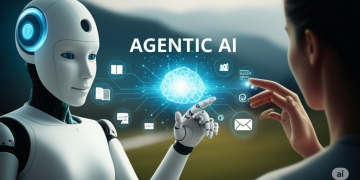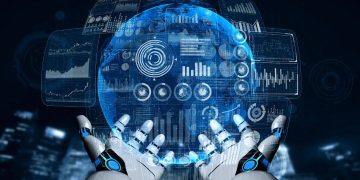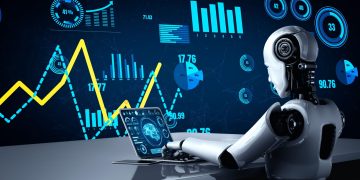Introduction
Artificial Intelligence (AI) is a transformative force that is revolutionizing industries worldwide. Businesses and organizations are increasingly adopting AI technologies to streamline operations, improve customer experience, and gain insights from data. As AI applications become more complex and data-driven, selecting the right AI platform is paramount for success.
Two critical factors that businesses must consider when selecting an AI platform are scalability and flexibility. These factors ensure that AI platforms can meet current demands while being able to adapt to future needs as the organization grows or as AI technologies evolve. This article delves into the significance of scalability and flexibility in AI platforms, offering insights on how to evaluate them and make informed decisions.
Section 1: Understanding Scalability and Flexibility in AI Platforms
1.1 Defining Scalability and Flexibility
- Scalability refers to a platform’s ability to handle increased workloads or growing demands without compromising performance. It ensures that as your business scales, the platform can continue to perform efficiently, accommodating more data, more users, or higher processing needs.
- Flexibility, on the other hand, is the ability of an AI platform to adapt to changing requirements, technologies, and workflows. It allows users to integrate different tools, algorithms, and data sources to meet evolving business needs.
1.2 The Importance of Scalability and Flexibility in AI
- Business Growth: As businesses grow and their data sets expand, the AI platform should be able to scale effortlessly to accommodate this growth.
- Technological Advancements: The AI field evolves rapidly, with new models, algorithms, and features emerging frequently. A flexible platform can easily integrate new technologies as they become available.
- Customization: Flexibility allows businesses to customize the platform to meet specific needs and integrate it with other tools, frameworks, or software used within the organization.
Section 2: Key Indicators of Scalability in an AI Platform
2.1 Handling Increased Data Volume
A major factor in scalability is the AI platform’s ability to handle increasing volumes of data. As businesses generate more data, the AI system needs to scale to process and analyze it efficiently.
- Big Data Compatibility: AI platforms should be able to integrate with big data solutions, such as Hadoop or Apache Spark, to process large datasets.
- Storage Capabilities: Platforms should be able to expand storage dynamically. Cloud-based platforms like AWS, Microsoft Azure, and Google Cloud provide scalable storage solutions, while on-premise solutions need to support additional hardware to manage growing data.
2.2 Distributed Computing Power
Scalability is also measured by how well an AI platform distributes workloads across multiple machines or processors to handle larger tasks.
- Distributed Systems: A scalable AI platform should allow for the parallelization of tasks across multiple servers or processing units. This reduces the time needed to train models or process large datasets.
- Cloud Computing: Cloud platforms offer scalability by providing the ability to easily scale compute resources, allowing businesses to scale up or down based on demand.
2.3 Real-Time Data Processing
As businesses leverage AI for real-time decision-making, scalability becomes essential for platforms that must process vast amounts of data in real time.
- Edge Computing: For certain use cases, AI platforms should support edge computing, where data processing happens closer to the source, reducing latency and improving response times.
- Real-Time AI: Platforms that support real-time analytics and decision-making are essential for industries like finance, healthcare, and retail, where speed and responsiveness are crucial.
2.4 Performance Under Heavy Load
When evaluating the scalability of an AI platform, businesses should assess how it performs under stress or heavy load conditions.
- Benchmarking: Platforms should be tested for performance under high data loads to ensure that their response time and accuracy remain consistent.
- Elasticity: A scalable AI platform should be able to adapt to sudden spikes in demand, such as during marketing campaigns or product launches, without compromising performance.

Section 3: Evaluating Flexibility in AI Platforms
3.1 Integration with Other Tools and Systems
Flexibility in AI platforms comes from their ability to integrate with other tools, platforms, or systems that a business already uses. This ensures that businesses can use the AI platform without disrupting their existing workflows.
- Open APIs: Look for platforms that offer robust Application Programming Interfaces (APIs) for seamless integration with third-party applications and tools.
- Cross-Platform Compatibility: The platform should work well across different systems and devices, whether cloud-based, on-premise, or hybrid solutions.
3.2 Support for Multiple Algorithms and Frameworks
The flexibility of an AI platform is also evident in its ability to support different types of machine learning models, algorithms, and frameworks.
- Framework Support: The platform should support popular machine learning and deep learning frameworks such as TensorFlow, PyTorch, Keras, and Scikit-learn. It should also support models like decision trees, random forests, neural networks, and reinforcement learning algorithms.
- Algorithm Customization: AI platforms should offer users the ability to customize models or develop their own models from scratch, allowing for tailored solutions based on specific business needs.
3.3 Adaptability to Evolving AI Technologies
The AI field is rapidly advancing with the development of new models and methods. A flexible AI platform should be able to accommodate emerging technologies like:
- Explainable AI (XAI): With increasing regulatory and ethical concerns, AI platforms should allow for the implementation of models that can explain their decision-making processes.
- Transfer Learning and AutoML: Flexibility in supporting emerging techniques like AutoML (automated machine learning) and transfer learning allows users to leverage pre-trained models and accelerate the training process.
3.4 Ease of Customization
A flexible platform should allow for customization at every level of the AI process. From data ingestion to model training and deployment, businesses should be able to adjust the platform to meet their unique needs.
- User Interface: An intuitive user interface (UI) that allows for easy customization of workflows can significantly enhance flexibility.
- Custom Workflows: A flexible platform should allow users to create their own workflows for data processing, training, evaluation, and deployment.
Section 4: Case Studies of Scalable and Flexible AI Platforms
4.1 Case Study: TensorFlow
TensorFlow, an open-source machine learning platform developed by Google, is known for both its scalability and flexibility.
- Scalability: TensorFlow’s ability to scale across multiple devices and systems, including GPUs, TPUs, and distributed cloud environments, makes it a prime choice for businesses with large-scale AI projects.
- Flexibility: TensorFlow supports a wide range of machine learning models, from traditional supervised learning to complex deep learning architectures, allowing businesses to experiment with different approaches.
4.2 Case Study: AWS AI and Machine Learning
AWS offers a comprehensive suite of AI and machine learning services that provide scalability and flexibility across various industries.
- Scalability: AWS’s cloud-based infrastructure ensures that businesses can scale their AI workloads seamlessly. With services like Amazon SageMaker, AWS enables businesses to train, test, and deploy machine learning models at scale.
- Flexibility: AWS provides flexibility by offering support for a wide range of machine learning frameworks (TensorFlow, PyTorch, MXNet) and the ability to customize models with ease.
4.3 Case Study: Microsoft Azure AI
Microsoft’s Azure AI platform is another strong contender when evaluating scalability and flexibility.
- Scalability: Azure AI integrates with Microsoft’s cloud infrastructure, providing businesses with the ability to scale compute resources as needed. It supports big data platforms like Apache Hadoop and Spark, which helps businesses process large datasets efficiently.
- Flexibility: Azure AI offers support for multiple machine learning frameworks, including TensorFlow, PyTorch, and Scikit-learn. Its modular design also allows businesses to build custom AI solutions based on their specific needs.
Section 5: Best Practices for Choosing Scalable and Flexible AI Platforms
5.1 Conducting a Needs Assessment
Before selecting an AI platform, businesses should assess their specific needs, including:
- Current and Future Workloads: Estimate how your AI workload might evolve in the coming years to ensure that the platform can scale accordingly.
- Required Customization: Identify the level of customization required for your models and workflows to choose a platform that offers sufficient flexibility.
5.2 Testing and Benchmarking
It is crucial to test AI platforms in real-world scenarios to assess their scalability and flexibility under actual business conditions.
- Pilot Projects: Start with pilot projects to evaluate the platform’s performance under varying data loads and use cases.
- Benchmarking Tools: Use benchmarking tools to measure processing speeds, response times, and system performance under heavy loads.
5.3 Vendor Support and Community Involvement
Choosing platforms with strong vendor support and active user communities ensures that businesses can receive assistance when scaling their AI infrastructure or adapting to new technologies.
- Vendor Support: Look for platforms that offer reliable customer support, including troubleshooting, updates, and best practices.
- Community Engagement: Platforms with large, active communities contribute to the continuous evolution of the platform and provide valuable resources for solving common issues.
Conclusion
Scalability and flexibility are essential when choosing an AI platform that will support a business’s AI ambitions both now and in the future. As organizations grow and AI technologies evolve, the chosen platform must be able to accommodate increased data volumes, provide seamless integration with other systems, and allow for customization to meet specific needs. By evaluating key factors such as data processing capabilities, cloud integration, support for emerging AI technologies, and customization options, businesses can make informed decisions that will future-proof their AI investments.











































